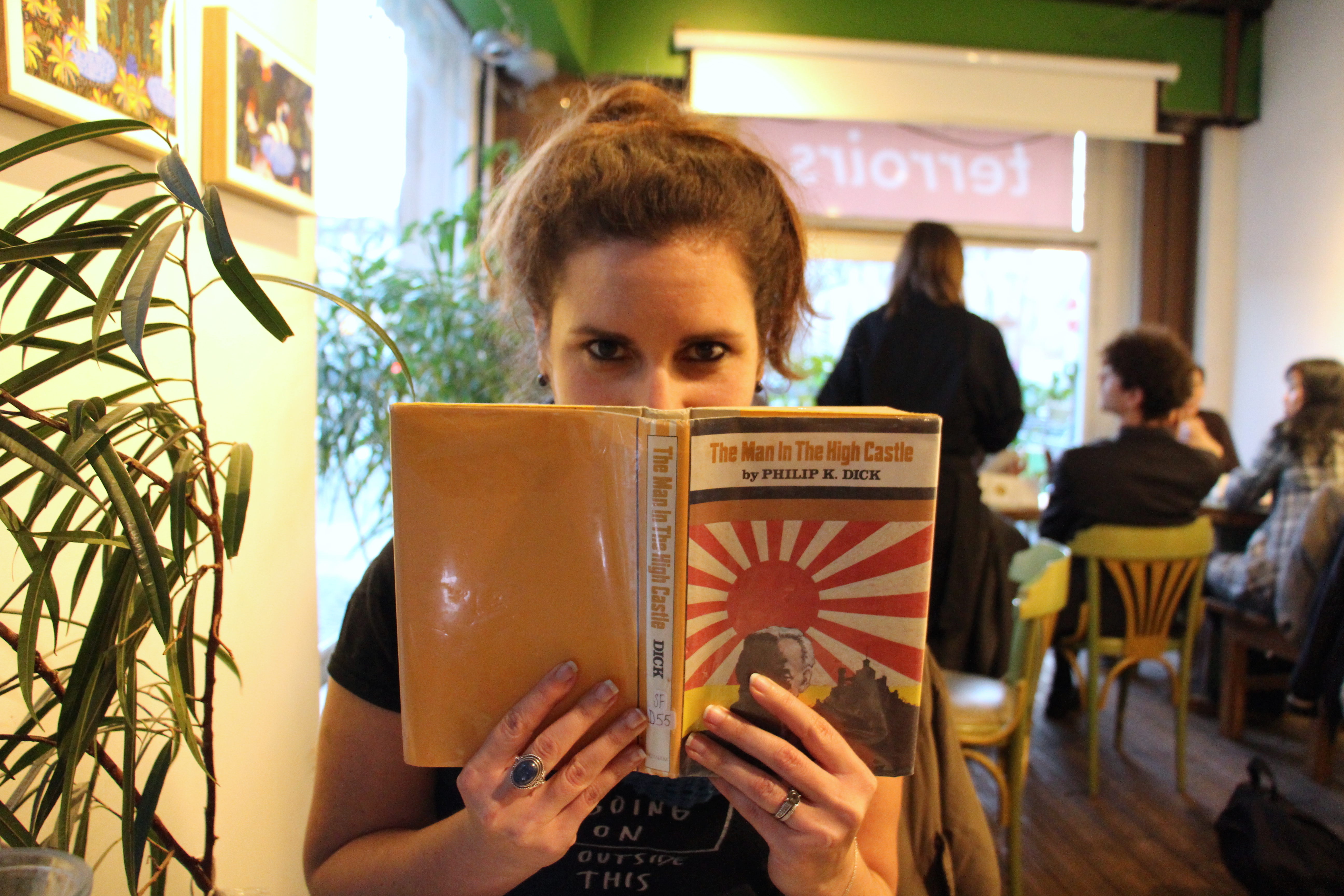High school literature classes are dangerous places for book lovers.
It’s easy, when you’re spending all of your time trying to meet deadlines, for reading to become less of a pleasurable experience and more of a chore, especially when well-meaning literature professors keep trying to get you to uncover the meaning behind various elements of a passage, poem, or book. What student hasn’t, at some point, thought to themselves, Maybe the writer didn’t think about the fact that the main character lived next to the ocean as a metaphor for his desire to be elsewhere? Maybe the writer just liked the ocean? And moreover, how often has that same exasperated student finally shared that thought with the teacher?
Well, I can speak for some writers, at least, in saying that my readers often find things I didn’t knowingly put into my chapters. Often, readers know more about what writers are doing than they do. But that doesn’t make them wrong.
Case-in-point:Â The Man in the High Castle, a book that’s been on my to-read list for months but that I only just finished, thanks to the new television adaptation of the novel and, consequentially, being fourth on the list of people waiting to get it out of the library.
The Man in the High Castle is, first and foremost, about a dystopian Earth where the Axis won World War II (Italy, Germany, and Japan). The novel takes place mainly in San Francisco, under control of the Japanese, and follows a handful of characters, all of whom have read – or at least heard of – a book entitled The Grasshopper Lies Heavy, which is the in-universe version of The Man in the High Castle, or in other words, a fictional work that discusses what would have happened if the war ended as it truly did, and the Allies won.
The elements to discuss within this book are numerous; I’m sure some literature professor is having a lot of fun with them. But I found myself drawn to one theme in particular throughout the book: the elements that artists – be they artisans or writers – put into their work without even knowing it.
There are two major examples of this throughout the book, both of which are explained, at least in part, by the artist or writer in question being guided by the I Ching, which features heavily in this alternate reality. But more important than how this is done, the book highlights the effects of this subconscious creation within the original creation: in one case, the lack of awareness of the artist of what he has placed in his art is taken at face-value and explored through a nearly fantastical approach, but in the other case – the case of the in-universe book – the effects of the work are far more realistic, and that, in my opinion, is what makes them so interesting.
The book, whether its writing was informed by the I Ching or not, has united a cast of disparate characters across the West Coast in the pursuit of more: knowledge, unity. The metaphor, in this case, is clear: books, and art, are power – regardless of whether the writer or artist know what he or she was creating at the time.
How else can you explain a work by Dutch Vincent Van Gogh moving an American teenager to tears, or a book by Jane Austen standing the test of time? There’s something essential conveyed through these works that’s bigger than the artist himself… and that makes it easier, somehow, to continue writing into the void.
So to answer the smart-ass 17-year-old who thought that Joseph Conrad wasn’t quite so aware of what he was putting in The Heart of Darkness as my English teacher seemed to think:
“That may be so. It doesn’t make it any less true.”
